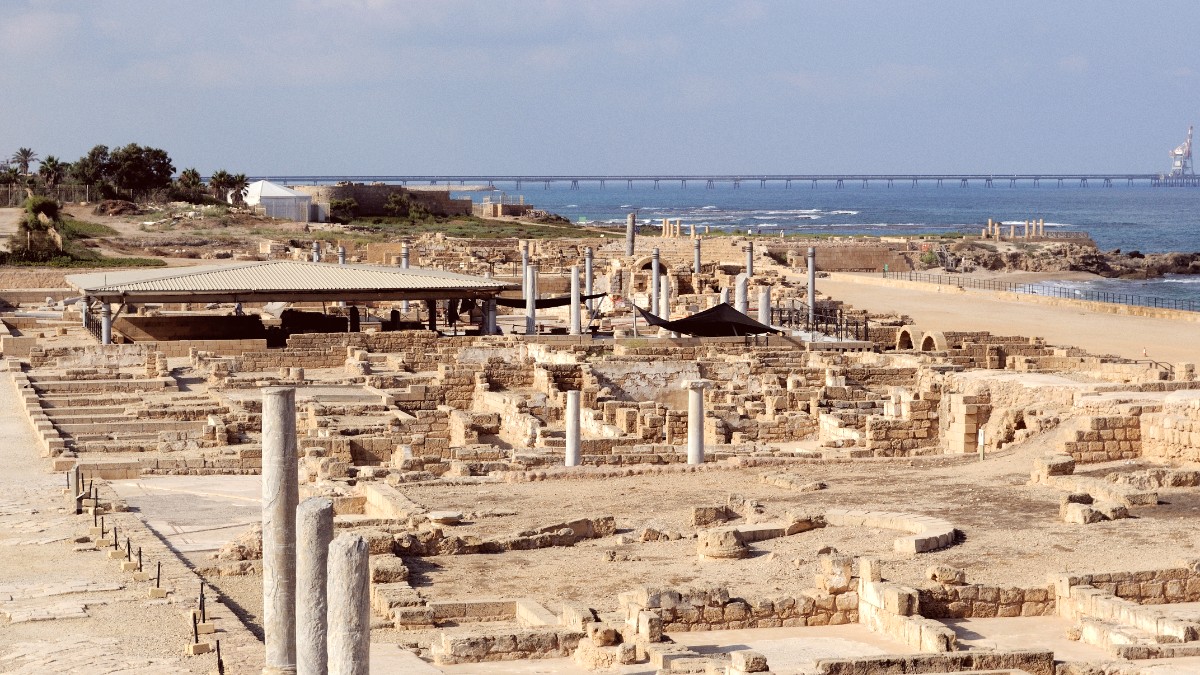
Israel
Caesarea National Park serves as the main draw, housing several must-visit sites.
This sprawling UNESCO World Heritage tentative site features extensive ruins from the Roman, Byzantine, and Crusader periods. It encompasses the ancient city that King Herod the Great built, and offers a remarkable journey through time.
Early morning visits just after the park opens deliver an experience of the site in relative solitude before tour groups arrive.
The Promontory Palace is a testament to Herod's ambition and the grandeur of Roman engineering and luxury.
The Crusader fortifications demonstrate medieval military architecture, built strategically atop earlier Roman structures.
Remains of a Byzantine church are believed by some to be near the location of St. Peter's conversion of Cornelius, a significant event in early Christianity.
The archaeological record also points to a synagogue in the ancient city, with mosaic remains found outside the main park area, reflecting diverse historical communities.
The ancient port, once one of the largest and most advanced in the Roman world, showcases a marvel of Roman engineering and maritime infrastructure.
Caesarea offers specific cultural institutions that complement its archaeological wonders.
This complex comprises two distinct museums located just outside the national park. They focus mainly on Spanish and Latin American art, notably surrealism, alongside some archaeological exhibits. Admission is free.
Situated within the Caesarea National Park, this interactive multimedia presentation delivers a concise and engaging overview of Caesarea's history, from its founding by Herod to its modern-day archaeological discoveries. It is included in the park entry fee.
This unique park features snorkeling and diving trails that permit visitors to explore the submerged ruins of Herod's ancient port. It provides an exceptional opportunity to see artifacts and structures underwater. Equipment rental and guided dives are available through local dive centers. Find activities on GetYourGuide.
Caesarea itself is a vast historical site, demonstrating continuous occupation over millennia, making the entire park an archaeological treasure trove.
The Crusader City, with its robust walls, gates, and internal structures, represents a distinct historical district. Its architecture contrasts with the earlier Roman and Byzantine layers found beneath.
Remains of a Byzantine church within the park are believed by some to be near the location of St. Peter's conversion of Cornelius. The archaeological record also points to a synagogue in the ancient city.
This site is a monument to Herod's ambition and the opulent lifestyle of the king, demonstrating remarkable Roman engineering and luxury.
The Crusader fortifications showcase medieval military architecture, built for strategic importance and defense, representing layers of occupation.
The ancient port, a marvel of Roman engineering and maritime infrastructure, was once one of the largest and most advanced in the Roman world.
The ancient port at Caesarea represents a significant achievement in Roman engineering and maritime infrastructure. It was once a bustling hub of trade and military activity.
Caesarea's appeal extends beyond its ruins to its beautiful natural surroundings.
The landscaped areas within Caesarea National Park feature pleasant green spaces for strolling and relaxation amidst the ruins, offering a peaceful environment.
The coastal views from Herod's Palace deliver dramatic panoramas of the Mediterranean. The Aqueduct Beach, with its iconic Roman arches, features an uniquely scenic viewpoint, especially at sunrise and sunset.
Birdwatching along the coastline can be rewarding, specifically during bird migration seasons. The natural promontory on which Caesarea was built provided a protected location for Herod's port, adding to its geological interest.
A long, beautiful sandy beach backed by the impressive Roman aqueduct. It is a popular spot for swimming, sunbathing, and photography, delivering a dramatic historical backdrop to a relaxing beach day.
A smaller, more sheltered beach located within the port area, suitable for swimming and enjoying the harbor atmosphere. Its calm waters make it ideal for families.
The Mediterranean Sea supports diverse marine life. Direct viewing is mainly limited to snorkeling or diving in specific areas, especially around the Underwater Archaeology Park.
The scenic coastal path stretching north from the Roman aqueduct offers beautiful views and gentle walking opportunities, ideal for appreciating the natural coastline.
The natural promontory on which Caesarea was built provided a protected location for Herod's port, a geological feature that influenced the city's development.
Beyond the main attractions, Caesarea is a few less-visited spots that offer unique insights and a quieter experience away from the main crowds.
While Caesarea itself is well-established, combining your visit with trips to smaller, less-known regional attractions can deepen your experience.
Always check the Israel Nature and Parks Authority website for current hours and fees before your visit.
Consider hiring a licensed private tour guide for historical insights and a personalized experience.